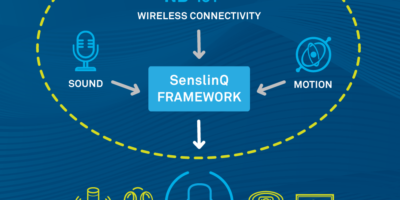Energy-friendly power management ICs (PMICs) from Silicon Labs, the EFP01 family are companion chips for EFR32 wireless devices and EFM32 microcontrollers. They enable developers to choose the optimal battery type and chemistries for their applications. Target applications include IoT sensors, asset tags, smart meters, home and building automation, security, and health and wellness products. The PMICs also enable developers to control a product’s power supply over multiple output rails and voltages.
Developers often use PMICs to meet the low-power requirements of IoT designs, but choosing the right one can be challenging. The EFP01 PMICs “provide a turnkey power management companion solution for our wireless SoC and MCU families, combined with Simplicity Studio tools, reference designs, sample applications and ‘PMIC-aware’ wireless stacks for easy development,” said Matt Saunders, vice president of IoT marketing and applications at Silicon Labs.
“If you want the easiest to configure, lowest power wireless solution, Silicon Labs’ EFP01 PMIC with Wireless Gecko is the best choice,” he continued. “The EFP01 is optimised for our IoT connectivity platforms, eliminating the need to incorporate multiple vendor reference designs into a schematic or layout.”
EFP01 PMICs include low-voltage DC/DC converters and regulators and a flexible mechanism to manage the power rails in a system design.
The EFP01 PMIC family features include flexible I/O voltage, a wide input voltage range (0.8 to 5.5V) to support an array of batteries. They also have wide output voltages to support a variety of peripherals, microcontrollers and radios.
The PMICs enable buck and boost voltage conversion as well as combined boost and buck (boost bootstrap) supporting low-voltage, high-current rails for IoT products requiring coin cell batteries and higher transmit power (up to +20 dBm).
They also feature multiple output power rails which allows an IoT product to be powered by one low-cost PMIC. This uses less board real estate and simplifies software/hardware design, says Silicon Labs.
The EFP01 offers quiescent current as low as 150 nA to reduce sleep current and enhance battery life. It also supports coulomb counting which offers vital information for battery life estimation and preventive maintenance.
Samples and production quantities of EFP01 PMICs in a 3.0 x 3.0mm QFN20 package are available now. Silicon Labs also provides three development boards – the SLWRB4179B radio board and two PMIC evaluation boards. Simplicity Studio offers energy profiler and network analyser tools, wireless stacks and reference designs. It is available free of charge.






